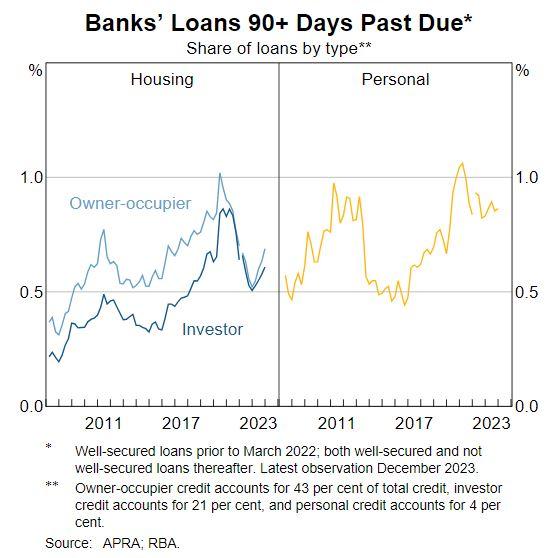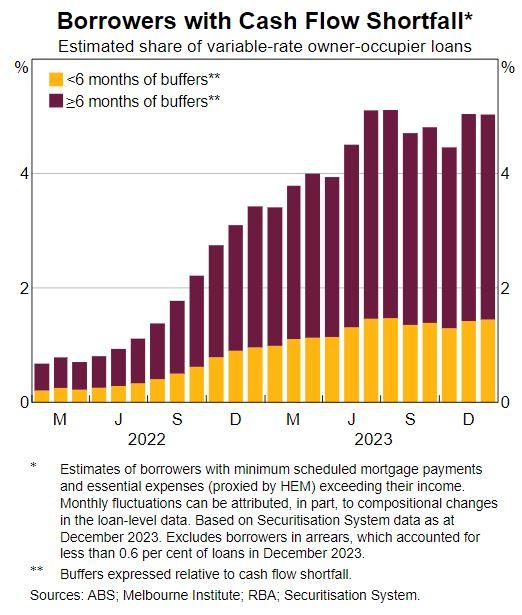The Reserve Bank of Australia (RBA) has disclosed that around one in twenty families with mortgages are now spending more than they earn due to the interest rate rises it has imposed, with relief expected—at best—over a year away.
In its March 2024 Financial Stability Review, the RBA says that “pressures from high inflation and tight monetary policy continue to weigh on many households and businesses” but these have been alleviated to some extent by factors including “the resolution of supply chain disruptions, declines in energy prices, continued strength in labour markets, strong household balance sheets and solid corporate earnings.”
While housing and personal loan arrears have increased since late 2022, they remain below their pre-pandemic peak. The RBA observes that a “small but increasing share of borrowers have requested and received temporary hardship arrangements from their lenders, which has contributed to arrears rates remaining a little lower than would have otherwise been the case.”
Based on the latest economic outlook, commercial banks expect arrears to continue to increase gradually but to remain historically low.

However, it warns that further weakness in the Chinese property sector could affect that country’s economy and “spill over to the rest of the world, including Australia, through trade channels and an increase in global risk aversion.”
It also notes external risks including cyber-attacks, as well as risks associated with climate change, and geopolitical tensions.
The RBA says that the worst affected by current policy settings are “lower-income households, including many renters, and the indebted households already facing acute budget pressures.”
However, it cautions that these pressures will “gradually ease over the next few years as inflation declines and real incomes rise.”
The RBA says it is aware that more people than usual, including wage earners and mortgagors, are seeking support from community organisations.
While most households have continued to make their repayments, many have only been able to do so by making adjustments, including reducing their discretionary spending and saving, increasing their hours of work, and drawing down on savings.
Despite this, RBA notes that many households with cash flow shortfalls still have substantial savings buffers to draw on.

For most businesses, the outlook is somewhat better, with “the profit margins of many businesses around pre-pandemic levels.”
The RBA said that “the overall level of profitability and strong balance sheets among businesses reduce the risk of widespread financial stress, and arrears on bank loans to businesses are low.”
However, some businesses, particularly in discretionary sectors, are likely to remain under financial pressure as sales growth remains flat because “many households have pulled back on non-essential consumption, and conditions remain challenging.”
The RBA warns that “the expected easing in labour market conditions and subdued growth in activity are likely to present further challenges for some households,” making it harder for those laid off or already unemployed to find work.
Nonetheless, most borrowers are expected to continue servicing their debts on schedule.
“Under both scenarios, however,” the RBA warns, “2024 will remain a challenging year for the cohort of borrowers already experiencing acute budget pressures.”
Even if inflation proved more persistent than the bank’s projections, “We estimate that less than three percent of variable-rate owner-occupier borrowers would be at risk of depleting their liquid savings buffers by the end of 2025. This is around half a percentage point more than under the February Statement scenario,” the RBA said.






